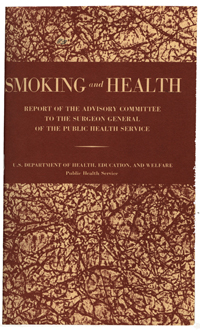This is a guest post written by Sigma Xi member John Fennick. He wrote this post to expand on his input to a conversation among Sigma Xi members about the "war on science."

For roughly the first two thirds of the last century, scientists were heroes held in high esteem. The staggering increase in human longevity, practical elimination of tuberculosis, the miracle of antibiotics, the race to the moon, all made science wonderful. So what happened? A look at what the public hears, reads, and gets their attention will shed some light.
The fruits of science just mentioned met all requirements for public acclamation. Then, around the period of the Apollo missions, those fruits became old hat and new candidates arose. Epidemiology crept into the spotlight with the likes of The Seven Countries Study, the surgeon general's report on smoking, and the Framingham Heart Study. People fathomed: "This stuff is about my health and my life." Science was still one of the good guys.
What the public read and heard was not one or more journal articles or the surgeon general's report, but summaries and interpretations written by science reporters, screened by editors and published in the mass media. Reporters, though scientifically literate, are not experts, they must assume the scientist's reports are accurate, candid, and honest. In that time period there were few, if any, problems surrounding that assumption. The reports and their conclusions invariably considered weaknesses in the data, alternate reasons for results and frequently, caveats such as "more studies are needed." These kinds of statements properly tempered headlines and context in the daily paper and so, the reader's reactions.
Though U.S. science funding was increasing at that time, the number of scientists rose faster. For example, from 1960 to 1970 total doctorate degrees awarded increased 205 percent while constant dollar funding in research and development went up only 45 percent. In short, competition became fierce while the public became thirstier for the latest health news. Requests for journal space exploded, editors preferred shorter papers and became choosier. They developed a strong preference for articles with positive results, showing little interest for those refuting earlier studies. So reports shrank in size, candid discussion became ever more abbreviated, caveats morphed to imply beneficial or harmful consequences from meat, dairy products, pattern baldness, wine, coffee, etc. Exacerbating this was the fact that something cited as beneficial today could be declared harmful tomorrow and vice-versa. Studies with barely marginal positive results were dressed in unwarranted claims, e.g. "This work demonstrates . . ." The public was enthralled—for a time.
After years of spin-off remedies stumped by bandwagons that ultimately crashed, the public came to believe what "studies show" was rarely, if ever, true. That quoted phrase became a synonym for charlantry. The Forbes "Lies, Damned Lies and Medical Statistics" article of 1995 dramatically characterized this new attitude.
The war on science is an understandable rebellion fueled by the public's perceived "damned lies." In fact, the "lies" do not differ in character from early research reports in any discipline. They require further work and subsequent verification or rejection. But because they deal with our health and wellbeing they capture our attention and, though they emanate mostly from one branch of science, epidemiology, a scientist is a scientist is a scientist, so all scientists suffer the heat.
So who's at fault? Anyone examining this mess quickly finds the blame is wide-spread. Scientists, pushing for publication and grant renewal, squeezed for funding by competition and for space by journal editors, start the ball rolling with abbreviated reports and exaggerated claims. Journal policies reward a style that, while certainly not fraud, is marginal because of what is implied and what is left out. (What happened to conscientious reviewers?) Editors in turn are hard pressed to choose among the multitude of submitted papers, rising costs of publishing and more recently, by the proliferation of open access journals and similar online freebies.
Finally, science reporters and their editors, the public's source of health information, are squeezed by decreasing readership and falling revenue. Reporters have little choice. Pressures for column-inches are large so science news gets exaggerated as well as abbreviated. Other media suffer similar constraints.
Most curious in all this is the fact that scientists blame a "scientifically ignorant" public and we see a great push to make the public literate in science. Even if that were accomplished, would they then correctly interpret what is seen in the press or heard over the air? Of course not.
The desired return to acceptance will take a generation at least. But it must begin by scientists—in particular, epidemiologists whose work is of such public interest—returning to impeccable integrity in their writing as well as their research. They must keep in mind their audience is not just other scientists. And remember, while John Q. really doesn't care about cold fusion, vaccinations causing autism is another matter! Reports must once again be complete with all the ifs, ands, and buts accompanying all research. Funders will not penalize integrity. Editors must change their ways lest their products vanish to the likes of open access journals. Science reporters, craftsmen of the interface, have the toughest row to hoe. When these three groups reassess their tasks, this current fashion of war may revert to acclamation.
John Fennick is a member of the Virginia Polytechnic Institute and State University Sigma Xi Chapter. He is a retired member of technical staff at Bell Telephone Laboratories. Current interests include medical statistics and epidemiology. He lives in Roanoke, Virginia.
Photo: The cover page of the first report of the Surgeon General's Advisory Committee on Smoking and Health. This was released in 1964 and helped epidemiology take the public spotlight.
Additional reading:
The association between exaggeration in health related science news and academic press releases: retrospective observational study:
http://www.bmj.com/content/349/bmj.g7015
The Tragedy of the Risk-Perception Commons: Culture Conflict, Rationality Conflict, and Climate Change:
http://papers.ssrn.com/sol3/papers.cfm?abstract_id=1871503&http://papers.ssrn.com/sol3/papers.cfm?abstract_id=1871503